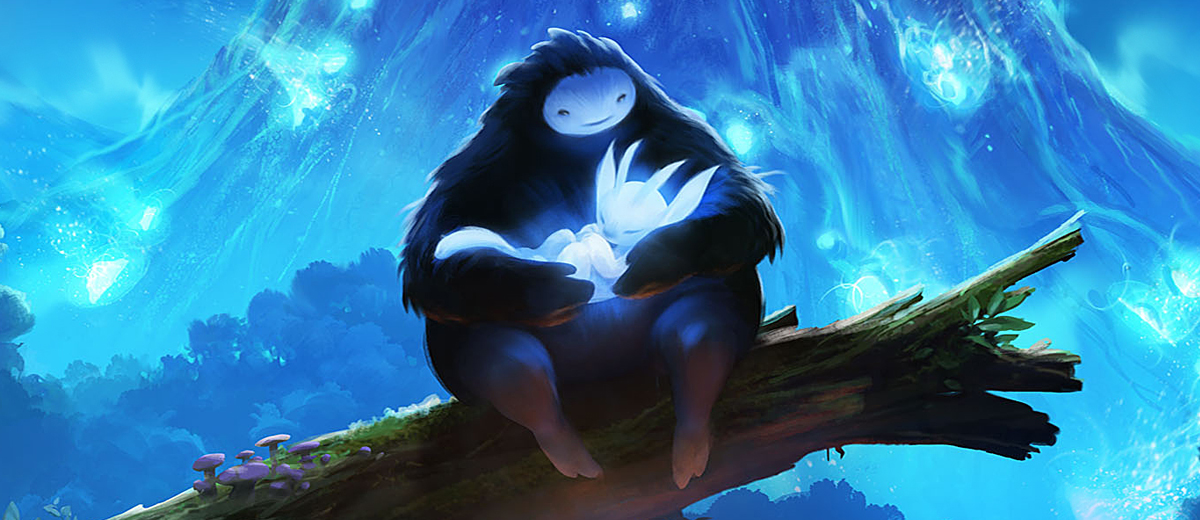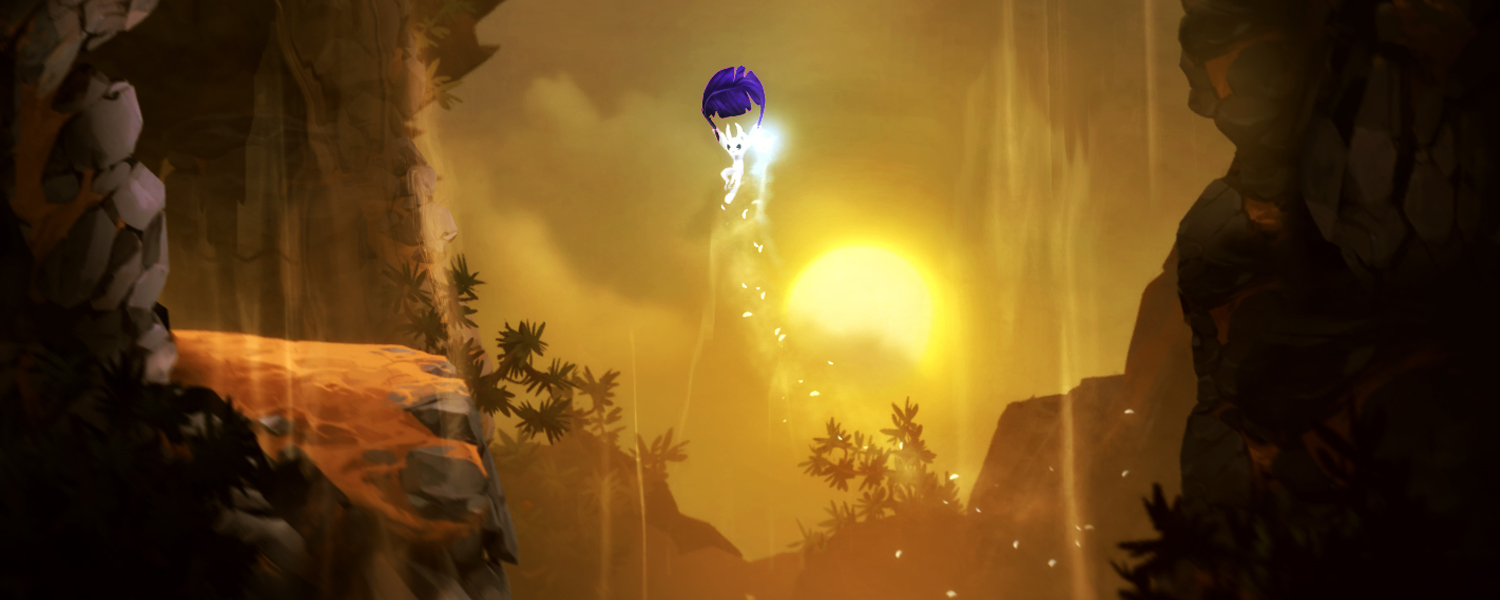 Story-based platformers aren’t exactly the rarest thing in the world, and we’ve had quite our fair share of emotional/story-based platformers this generations so far, like Valiant Hearts, Child of Eden and such. The bar this generation had been set quite high, but every once in a while a special kind of game comes along, one which manages to capture the essence of not only gaming in general, but the essence of themes that are relevant to our everyday lives, and manage to immerse us in a world that is not only out of this world, but also captures the depth of our own.
Story-based platformers aren’t exactly the rarest thing in the world, and we’ve had quite our fair share of emotional/story-based platformers this generations so far, like Valiant Hearts, Child of Eden and such. The bar this generation had been set quite high, but every once in a while a special kind of game comes along, one which manages to capture the essence of not only gaming in general, but the essence of themes that are relevant to our everyday lives, and manage to immerse us in a world that is not only out of this world, but also captures the depth of our own. The tale of Ori and the Blind Forest beings as we meet Ori, a Forest Spirit that was separated from his home as a baby. As Ori withered away into the wild, he is discovered by Naru, who takes him in as his own. Raised as her own, Ori and Naru grow incredibly close together, and their amazing bond is set-up in a powerful prologue that may not be long, but it’ll follow players long into the game. After a terrible series of devastating events is set in motion, Ori’s world starts to fall into decay, and the young orphan must find his strength to fulfil the destiny that lies ahead of him and save the world that he became to call home.
The tale of Ori and the Blind Forest beings as we meet Ori, a Forest Spirit that was separated from his home as a baby. As Ori withered away into the wild, he is discovered by Naru, who takes him in as his own. Raised as her own, Ori and Naru grow incredibly close together, and their amazing bond is set-up in a powerful prologue that may not be long, but it’ll follow players long into the game. After a terrible series of devastating events is set in motion, Ori’s world starts to fall into decay, and the young orphan must find his strength to fulfil the destiny that lies ahead of him and save the world that he became to call home.
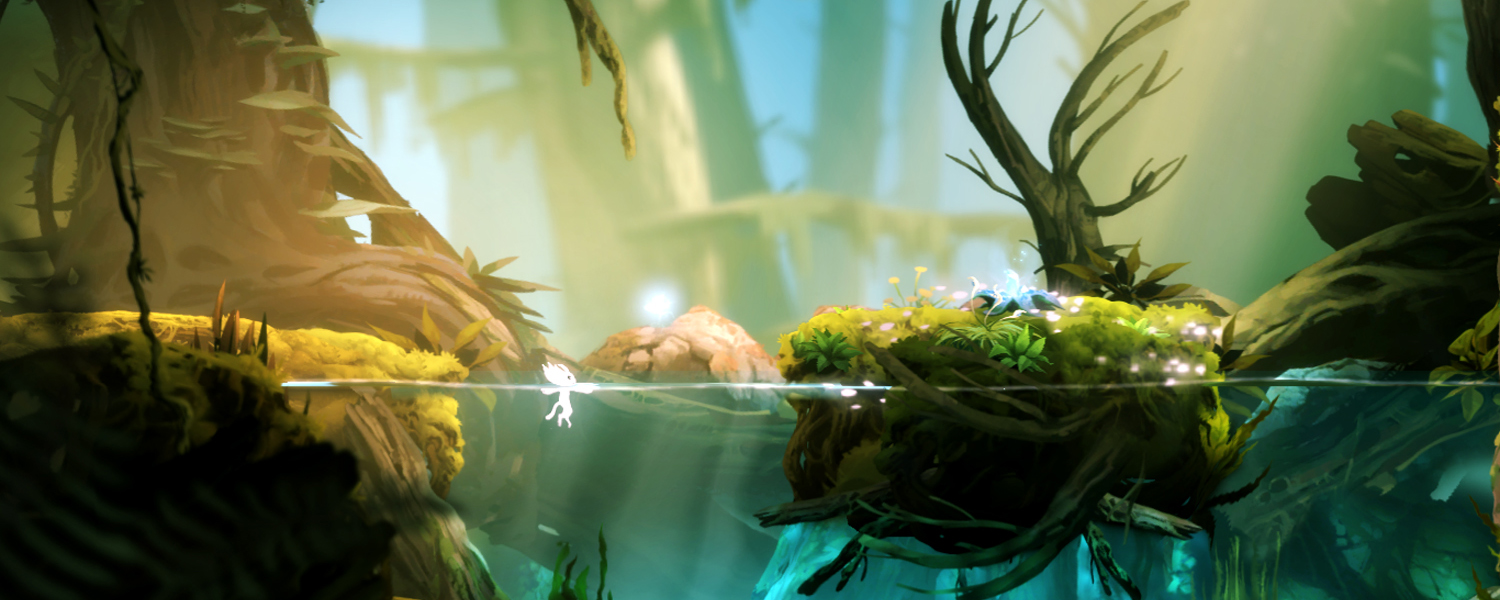 At first sight Ori and the Blind Forest may seem light-hearted, but its themes can be incredibly mature throughout the narrative. One could call the world cute, but it can have a serious bite as a whole. The game has little to no voice acting, aside from some narrative speak, which is spoken in a language of the universe itself and translated visually with stylised subtitles, which are told from the point of view of an important related character. Themes like loss, responsibility and such are echoed continuously throughout the narrative, which effectively adds emotional weight to the shoulder of the player. Despite the lack of actual voices, Ori and all surrounding characters are simply as engaging as can be, and Ori’s body language alone can tell a thousand words, ranging from sadness to happiness, and all emotions in the spectrum in-between.
At first sight Ori and the Blind Forest may seem light-hearted, but its themes can be incredibly mature throughout the narrative. One could call the world cute, but it can have a serious bite as a whole. The game has little to no voice acting, aside from some narrative speak, which is spoken in a language of the universe itself and translated visually with stylised subtitles, which are told from the point of view of an important related character. Themes like loss, responsibility and such are echoed continuously throughout the narrative, which effectively adds emotional weight to the shoulder of the player. Despite the lack of actual voices, Ori and all surrounding characters are simply as engaging as can be, and Ori’s body language alone can tell a thousand words, ranging from sadness to happiness, and all emotions in the spectrum in-between.
The world of Ori and the Blind Forest is full of depth, and both the background information and main narrative are some of the most well realised pieces of writing that I’ve encountered in gaming in a long time, and possibly even film. Every piece of gameplay, area and characters is woven into the intricately-detailed universe in a natural way, in which every piece of story, gameplay and design has its rightful place in the universe. Moon hasn’t just succeeded in creating a coherent story, but a story that genuiniely connects with players, and lets players not only move throughout its world with purpose, but with a clear goal and motivation.
 When it comes to the visual department Ori and the Blind Forest embraces an almost painting-like form of artwork consisting of simple but well designed characters, visually appealing worlds and a lighting system that wonderfully enhances the experience as a whole. From the opening moments of the game the mood is set by colourful visuals, which create a warm mood that goes hand in hand with the heartwarming opening, but once the story makes dramatic turns, the presentation of the world follows and we’re introduced to a dark and bleak section that is set to define the coming events. The world of the Blind Forest can be as colourful as it can be serious, and the adapting colour palettes and lighting situations are always set in the right way to present the levels in their optimal state.
When it comes to the visual department Ori and the Blind Forest embraces an almost painting-like form of artwork consisting of simple but well designed characters, visually appealing worlds and a lighting system that wonderfully enhances the experience as a whole. From the opening moments of the game the mood is set by colourful visuals, which create a warm mood that goes hand in hand with the heartwarming opening, but once the story makes dramatic turns, the presentation of the world follows and we’re introduced to a dark and bleak section that is set to define the coming events. The world of the Blind Forest can be as colourful as it can be serious, and the adapting colour palettes and lighting situations are always set in the right way to present the levels in their optimal state.
When it comes to environmental variety, Ori and the Blind Forest is quite diverse when it comes to design. Despite everything being connected as a single world, each section can look vastly different from the last. This isn’t just because of the lighting and colour palettes, but first and foremost because of the distinctive designs of each of the sections of Ori’s world. From the light and colourful forest to the moody caverns, the feeling of repeated visuals is barely ever present.The transitions between these sections is well executed, which is often a hard thing to do when switching areas as frequently as you’ll do in the game.
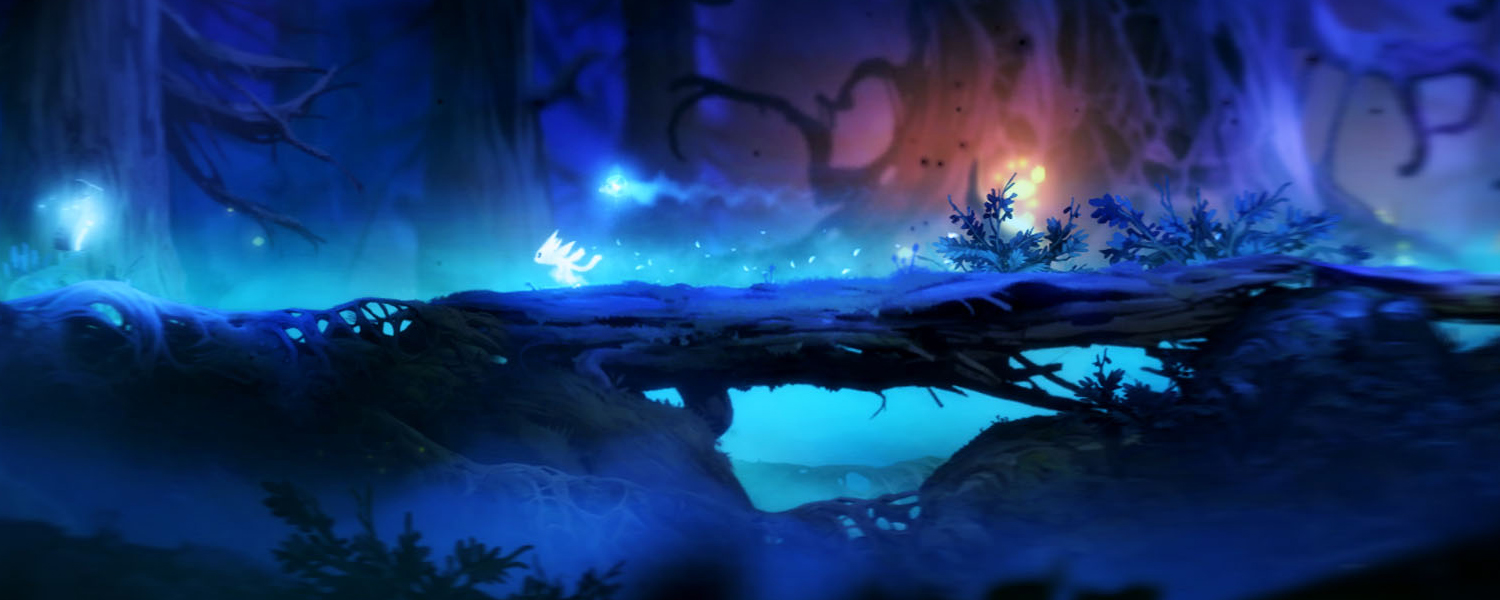 Character designs in the game are quite diverse, with plenty of variety in detail for both the protagonists and antagonists of the game. The simplicity of Ori’s design in particular is well done, whilst still creating a kind of iconic look for the character, which makes him immediately recognizable. The friendly form of design for Ori and the other protagonists is an excellent contrast to the enemies you’ll encounter. The main antagonist in particular is quite stunning, and seeing the imagery of a dark and giant owl in the opening sequences of the game certainly made it clear that the threat was real and gave me a good idea of what the stakes in this journey were gonna be. At times the storytelling felt like a super sized-shadow puppet theatre, with the shadows coming to life on the screen, and the narrator speaking a tale of loss, love and courage, accompanied by a musical score that is as heart-filled as the story and visual presentation themselves. Composer Gareth Cooker delivers an outstanding soundtrack that doesn’t just accompany the game in a fantastic manner, but even stands on by itself quite coherently, and it often helps elevate the atmosphere even more than the visuals themselves. Rather than seeming like an afterthought of a composition, the orchestrated score of Ori and the Blind Forest is as important as all of the other aspects of the game. Providing a colourful and fantastic melody to the world of Ori, it wouldn’t be the same without it.
Character designs in the game are quite diverse, with plenty of variety in detail for both the protagonists and antagonists of the game. The simplicity of Ori’s design in particular is well done, whilst still creating a kind of iconic look for the character, which makes him immediately recognizable. The friendly form of design for Ori and the other protagonists is an excellent contrast to the enemies you’ll encounter. The main antagonist in particular is quite stunning, and seeing the imagery of a dark and giant owl in the opening sequences of the game certainly made it clear that the threat was real and gave me a good idea of what the stakes in this journey were gonna be. At times the storytelling felt like a super sized-shadow puppet theatre, with the shadows coming to life on the screen, and the narrator speaking a tale of loss, love and courage, accompanied by a musical score that is as heart-filled as the story and visual presentation themselves. Composer Gareth Cooker delivers an outstanding soundtrack that doesn’t just accompany the game in a fantastic manner, but even stands on by itself quite coherently, and it often helps elevate the atmosphere even more than the visuals themselves. Rather than seeming like an afterthought of a composition, the orchestrated score of Ori and the Blind Forest is as important as all of the other aspects of the game. Providing a colourful and fantastic melody to the world of Ori, it wouldn’t be the same without it.
 Of course here we end up at the most essential section of our look at Ori and the Blind Forest, the actual gameplay. Before heading off into celebratory territory, there are a few things that we need to get straight first. What exactly is Ori and the Blind Forest? And what makes it unique gameplay-wise? Ori and the Blind Forest is your traditional platforming title, with upgradeable powers, collectables, unlockable sections of the world and puzzle-like sequences that require both wits and reflexes. Now what exactly makes Ori unique in these aspects? Funny enough, nothing. Now of course this sounds as a negative argument and I wouldn’t blame you for seeing this as one yourself, but for everything it does the game is quite good at all of these elements. There are no reinventions of the wheel present, nor any fancy antics that would set this game apart from other games in the genre, but the result is a game that only sets out to perform existing concepts, but succeeds pretty flawlessly in most of them. Whilst the saying “If it’s not broken, don’t fix it” isn’t exactly what I had in mind, this return to basic gameplay elements is a nice change of pace in a climate that often seeks to innovate, but fails in its executions. Don’t get me wrong, we desperately need innovation in the industry, but this momentary breather in the cycle is simply fun to play, challenging and keeps it simple when it comes to mechanics.
Of course here we end up at the most essential section of our look at Ori and the Blind Forest, the actual gameplay. Before heading off into celebratory territory, there are a few things that we need to get straight first. What exactly is Ori and the Blind Forest? And what makes it unique gameplay-wise? Ori and the Blind Forest is your traditional platforming title, with upgradeable powers, collectables, unlockable sections of the world and puzzle-like sequences that require both wits and reflexes. Now what exactly makes Ori unique in these aspects? Funny enough, nothing. Now of course this sounds as a negative argument and I wouldn’t blame you for seeing this as one yourself, but for everything it does the game is quite good at all of these elements. There are no reinventions of the wheel present, nor any fancy antics that would set this game apart from other games in the genre, but the result is a game that only sets out to perform existing concepts, but succeeds pretty flawlessly in most of them. Whilst the saying “If it’s not broken, don’t fix it” isn’t exactly what I had in mind, this return to basic gameplay elements is a nice change of pace in a climate that often seeks to innovate, but fails in its executions. Don’t get me wrong, we desperately need innovation in the industry, but this momentary breather in the cycle is simply fun to play, challenging and keeps it simple when it comes to mechanics.
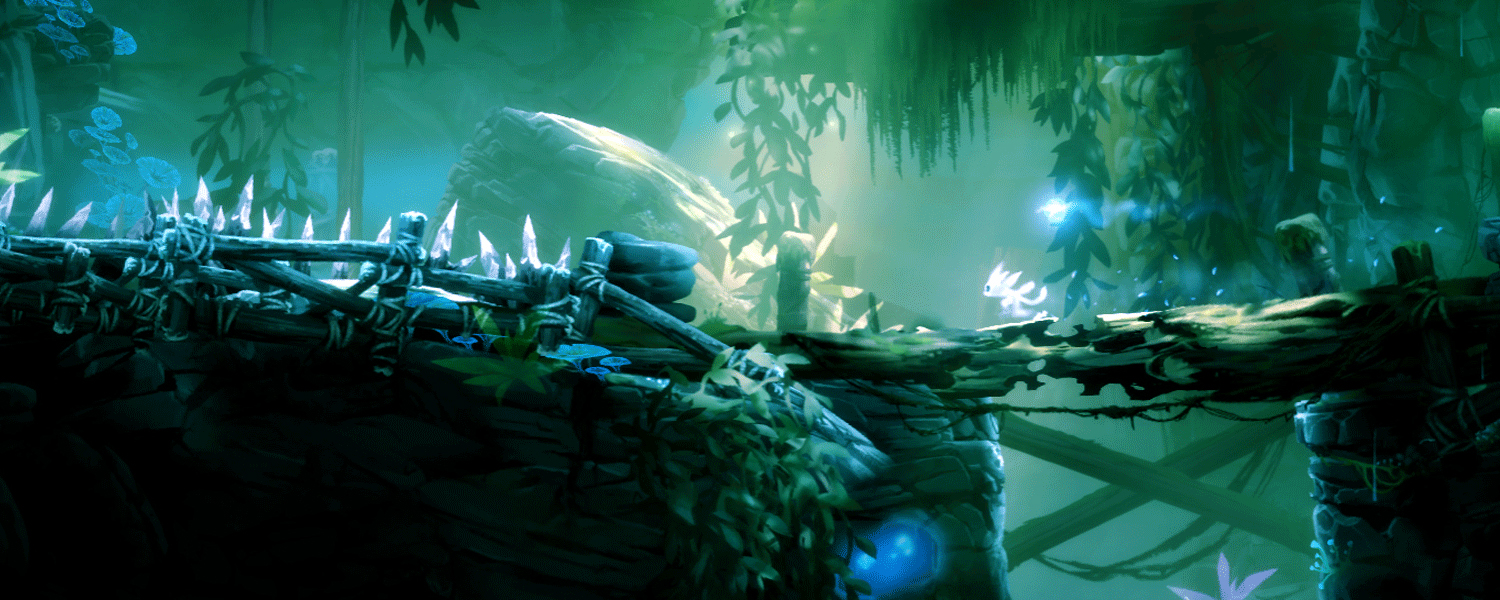 The levels/worlds of the game vary significantly in tone and design, but part of the game is connected as a singular ecosystem, allowing players to backtrack all of the levels to collect energy for upgrades and collect items and explore the world as much as you desire. None of the areas are locked after their initial discovery, and the dynamic set-up of the map allows to reach certain sections in multiple ways. Whilst the story of the game is always told in the same order, it’s up to the players themselves to find their way to the next area. The game will give you a good idea on where to go, but it isn’t always as blatantly clear. Finding the correct route isn’t that complicated, and if you like exploring finding your way throughout the world can be a very fun activity. Until you complete the map, that is. This only applies for as long as you haven’t finished the story itself, since there aren’t any activities or possibilities to explore the map as an endgame.
The levels/worlds of the game vary significantly in tone and design, but part of the game is connected as a singular ecosystem, allowing players to backtrack all of the levels to collect energy for upgrades and collect items and explore the world as much as you desire. None of the areas are locked after their initial discovery, and the dynamic set-up of the map allows to reach certain sections in multiple ways. Whilst the story of the game is always told in the same order, it’s up to the players themselves to find their way to the next area. The game will give you a good idea on where to go, but it isn’t always as blatantly clear. Finding the correct route isn’t that complicated, and if you like exploring finding your way throughout the world can be a very fun activity. Until you complete the map, that is. This only applies for as long as you haven’t finished the story itself, since there aren’t any activities or possibilities to explore the map as an endgame.
Of course the main factor of Ori and the Blind Forest is traversal and combat, both of which are simple in mechanics, but mastering each of them can be quite tricky. Platforming in advanced sections can be quite a tricky feat, but once you get a hang of the moments and timing of your jumps everything can be a piece of cake. The same goes for combat, which is structured in a pretty simple fashion, but still offers option to cater to your play style. Either fire at them from a short distance, or get up close and personal, your choice. That being said, despite the simple mechanics the game does have a pretty steep difficulty curve, which may be jarring for some. Whilst the game is essentially easy to get into in the opening stages, the later levels get seemingly more challenging as you progress through them. The further you go, the more the game begins to show its teeth, and whilst the challenge is admirable, for some it may be a bit off-putting if they’re too comfortable with the difficulty of the earlier stages. It would be hard to count this as a negative, since it is a matter of perspective, but none the less it is something worth noting.
The game can also be as difficulty as you’re willing to make it. The game has specific save points where your progress is saved, but for the majority of the game saving your progress is entirely in your own hands, with the player being able to create their own save points depending on wether they’ve got enough energy to do so. This seems pretty straightforward at first, but once you have your first streaks of deaths you soon find that placing these markers on the correct spots is essential to your progress, especially in difficulty platforming sections where you can easily respawn far away from your point of death because you didn’t save your progress at a later point. It does give you options to practice certain sections, in case you’re having issues with any of the elements you encounter.
On a technical note the game is very stable throughout gameplay when it comes to the framerate and visual fidelity. There are a few technical difficulties that occurred throughout the title, which resulted in the game either locking up or closing in its entirety due to an unforeseen error. The game has received a patch since its initial release date, but some of these issues still remain, though they aren’t that frequent. The most notable error left my game hanging on the menu screen, which led me to reboot the entire title and go through the startup process. Experiences may vary.


